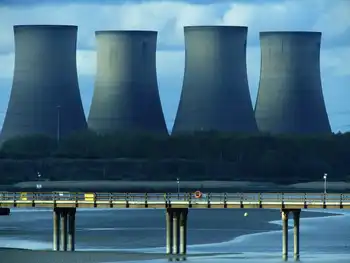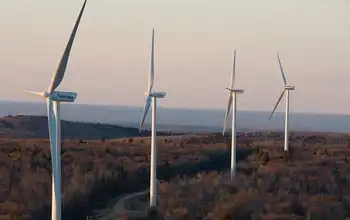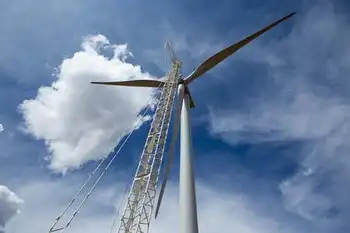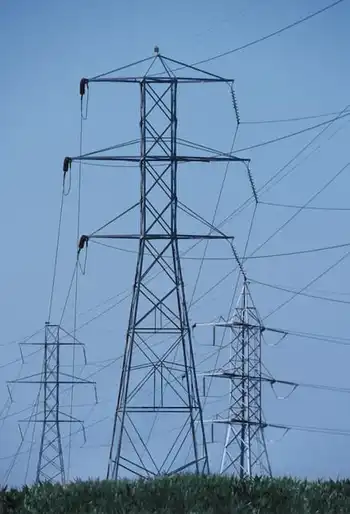Geothermal Energy Controversy In Central Oregon
By New West Network
Arc Flash Training - CSA Z462 Electrical Safety
Our customized live online or in‑person group training can be delivered to your staff at your location.

- Live Online
- 6 hours Instructor-led
- Group Training Available
This was the situation I found myself in recently. The water where I sat was not a hot tub - at least not according to Maytag standards. Rather, it was the product of an ancient shield volcano at the Newberry Volcanic National Monument about 45 miles from Bend. I had to dig several feet down into a rocky shoreline along Paulina Lake to discover the hot water. Upon reaching the source, I spent the next several hours forming my own pool. Then I soaked until my skin resembled an old prune.
The reason the hot water exists is because Newberry sits on top of millions of dollars worth of high-value pumice and geothermal energy. The popular recreational area where I sat that night is the focus of one of OregonÂ’s most controversial Measure 37 claims and the WestÂ’s future of sustainable energy resources.
Several companies, most specifically the Portland-based LPP Resources, which owns some of the Newberry property, have plans to build a geothermal power plant on the west flank of the crater. These kinds of power plants use heat and steam from the earthÂ’s core to crank turbines and generate electricity. The upside is the plants work without all the emissions associated with coal energy. The downside is they are often located in remote and scenic areas - such as the case with Newberry, one of only three national monuments in Oregon.
In addition to the power plant, James Miller, a general partner with LPP Resources, and his company have drawn up plans to construct a large scale pumice mine and 100 homes inside the monument. All told, the partnership values the developments at $203 million.
Basically the question weÂ’re dealing with here is whatÂ’s more important, taking advantage of a natural, efficient power supply or conserving the beauty of a state treasure? ItÂ’s a question with passionate support on each side. LetÂ’s take a look at some of the facts.
ThereÂ’s no doubt constructing a massive power plant smack in the middle of a gorgeous obsidian flow between Paulina and East lakes would deprive scenic amenities at Newberry. However, the truth of the matter is that areas in and around Newberry are some of the most geologically-suitable locations for a geothermal power plant. Estimates by the U.S. Geological Survey have put the areaÂ’s geothermal energy potential between 13,000 and 16,000 megawatts. By comparison, the prodigious Dalles Dam on the Columbia produces about 1,000 megawatts.
Currently, geothermal represents only a small slice of the countryÂ’s total power production. Most of our electricity still comes from coal, hydroelectric and natural gas-fired plants. However, when geothermal can be utilized itÂ’s an efficient way to generate electricity. The struggle is to find a reliable source. Typically that means a geologically unstable area with a history of volcanic activity. Newberry, which erupted 1,300 years ago, is a perfect candidate with temperatures around 500 degrees Fahrenheit a couple of miles below the surface, according to data from the Deschutes National Forest Website.
A study released recently by the U.S. Department of Energy said that with proper investing in geothermal technology, the United States could conjure enough energy from geothermal power plants to provide a tenth of the nationÂ’s power demands by 2050.
The studyÂ’s authors said an investment of $800 million to $1 billion over the next 15 years would be needed to develop the first set of enhanced geothermal systems in the U.S. One ideal place to start, the report said, would be somewhere with hot rocks relatively shallow beneath the surface to help reduce expenses. Yes, Newberry fits into that category.
A geothermal plant functions by having operators drill into the ground to reach rocks that are heated by the EarthÂ’s core. The goal is to tap into areas where there are cracks in the rocks that hold superheated water. The liquid, at temperatures higher than 400 degrees, would be pumped toward the surface where, as steam, it would turn turbines to generate power. Sounds simple enough, right?
According to the report, geothermal facilities can be designed to have minimal greenhouse gas emissions, and can even have a lower impact on the environment than other renewable resources because a majority of the operation is underground.
Still, some skeptics fear potential pollution associated with a geothermal plant at Newberry. Water from below the ground can bring unwanted metals and minerals with it when converted to steam, opponents say. Also, there is concern about contaminating underground aquifers, the lakes and overall health of the environment near the facility.
Bill Marlett, the executive director of the Oregon Natural Desert Association, a Bend-based conservation group, recently told me that Newberry is not a suitable place to build a geothermal power plant.
“They’re wasting their time looking at this site,” he said.
There are two reasons Newberry wonÂ’t work, according to Marlett. First, the rugged terrain between the lakes would be unfriendly for any construction project. Second, the sub-surface area would not be as efficient as developers imagine it would be.
Marlett said he understands that geothermal power plants can only be constructed in the few places where the resources are available, as they potentially are at Newberry. However, the monument is a state treasure and one of the most popular recreational locations in Central Oregon, Marlett pointed out.
“You don’t see them trying to build power plants in Yellowstone Park,” he added.
The federal government designated the 55,000-acre Newberry area a monument in 1990 to “preserve the site’s unique character,” which includes forests of ponderosa pine and massive flows of volcanic rock. Newberry is a favorite for camping, hiking, fishing and winter sports enjoyed by Central Oregonians, myself included.
As it stands now, the county is still handling the latest Measure 37 claim filed by Miller and LPP. Marlett said he was aware of no changes since the issue was a hot topic with the county several months ago. Executives at LPP have said they would be willing to sell or trade the land with the Forest Service, as long as they were offered “a fair price.”
Those opposed to development within the Newberry caldera are willing to keep dialogue open with Miller and hope to resolve the issue as soon as possible, Marlett said.
“I’m not against geothermal energy,” Marlett said. “It’s just not a good idea to put (a power plant) in the middle of a national monument.”











